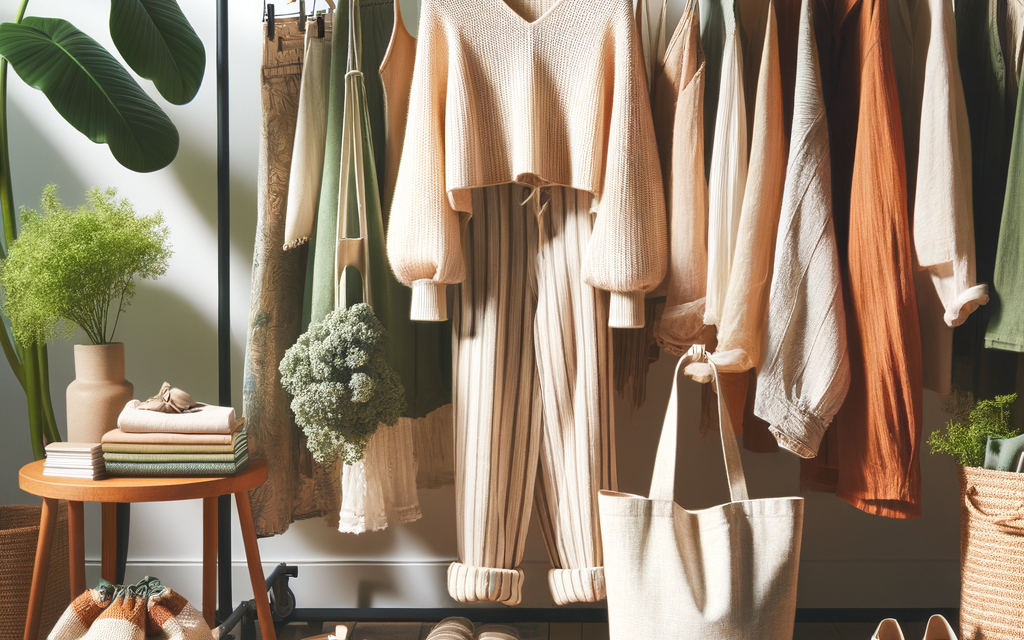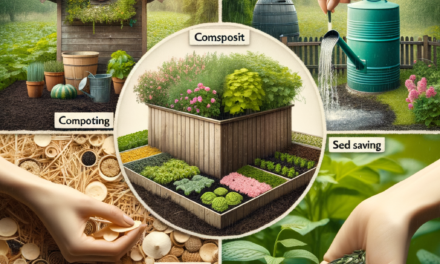Introduction
As the world becomes increasingly aware of the environmental impact of our daily choices, sustainable fashion has emerged as a crucial aspect of green living. Embracing eco-friendly clothing options not only helps to reduce waste and conserve resources but also supports ethical practices in the fashion industry. In this guide, we’ll explore how you can make sustainable fashion choices that benefit both the planet and your personal style.
Understanding Sustainable Fashion
Sustainable fashion refers to clothing and accessories that are designed, manufactured, distributed, and used in ways that are environmentally friendly and socially responsible. It includes considering the full lifecycle of the product, from the sourcing of materials to its eventual disposal or reuse.
Step-by-Step Guide to Sustainable Fashion Choices
Step 1: Educate Yourself
Before diving into sustainable fashion, it’s important to understand the issues. Research the environmental impacts of the textile industry, such as water pollution, chemical use, and carbon emissions. Learn about the social aspects, including labor conditions and fair wages for workers. Knowledge is power, and it will help you make informed decisions. A great resource to start with is Generation Rewear, which dives into sustainable fashion practices.
Step 2: Assess Your Current Wardrobe
Take a look at your existing clothes. Are there items you rarely wear? Could some pieces be repurposed or altered? Understanding what you already have can prevent unnecessary purchases and inspire creative ways to refresh your wardrobe without buying new. WEAR AND REFASHION: A guide to mending and upcycling clothes is an excellent guide for those looking to mend and upcycle their existing garments.
Step 3: Shop Mindfully
When you do need to add to your wardrobe, do so thoughtfully. Seek out brands that prioritize sustainability in their materials and manufacturing processes. Look for certifications like GOTS (Global Organic Textile Standard) or Fair Trade, which indicate higher environmental and social standards. Consider adding pieces like the FellHerz Women’s T-Shirt Walgesang White Organic and Fair to your collection for a sustainable and stylish option.
Step 4: Choose Quality Over Quantity
Invest in well-made, durable pieces that will last longer, rather than cheap, fast-fashion items that quickly fall apart. This reduces the cycle of consumption and waste. Consider the ‘cost-per-wear’ of items and opt for timeless designs that won’t go out of style. The book Sew What?!? How to Design Sustainable Fashion: Vol. 2 The Essentials can provide insights into designing and choosing high-quality, sustainable fashion.
Step 5: Care for Your Clothes
Proper care can extend the life of your garments significantly. Follow washing instructions, repair minor damages, and store items correctly. Additionally, washing less frequently and at lower temperatures can save water and energy while preserving your clothes.
Step 6: Recycle and Upcycle
When clothes are beyond repair, recycle them responsibly. Look for textile recycling programs in your area. Alternatively, get creative and upcycle clothing into new items, like turning old t-shirts into tote bags or quilts. For more ideas, check out Eco Chic – Pioneering Sustainable Fashion (Fashion Design), which explores innovative ways to repurpose clothing.
Step 7: Support Circular Fashion
Embrace the circular economy by choosing items from companies that take back worn garments for recycling or offer repair services. Participate in clothing swaps or buy second-hand to keep clothes in circulation for longer. For additional insights on how to create income from sustainable fashion practices, consider reading Fashion E-commerce Income Strategies: Resell, Rent & Save on Clothing Online.
Tips and Common Mistakes to Avoid
- Don’t Impulse Buy: Purchase with intention. Avoid the temptation of sales and trends that don’t align with your values or needs.
- Watch Out for Greenwashing: Some brands may market themselves as ‘sustainable’ without substantial practices to back it up. Research and verify their claims.
- Quality vs. Label: Don’t assume that a higher price or a designer label means an item is more sustainable. Assess the product on its own merits.
Conclusion
Making sustainable fashion choices is a journey, not a destination. Every small step you take contributes to a larger change in the industry and helps protect our planet. Embrace the process, celebrate your progress, and continue to learn and grow in your sustainable fashion journey. Remember, your wardrobe doesn’t have to be perfect to make a positive impact. For a deeper understanding of consumption patterns, Clothing Consumption and Disposal Patterns of Indian Women: A comparative study of NCR and Mumbai offers a comprehensive study.










